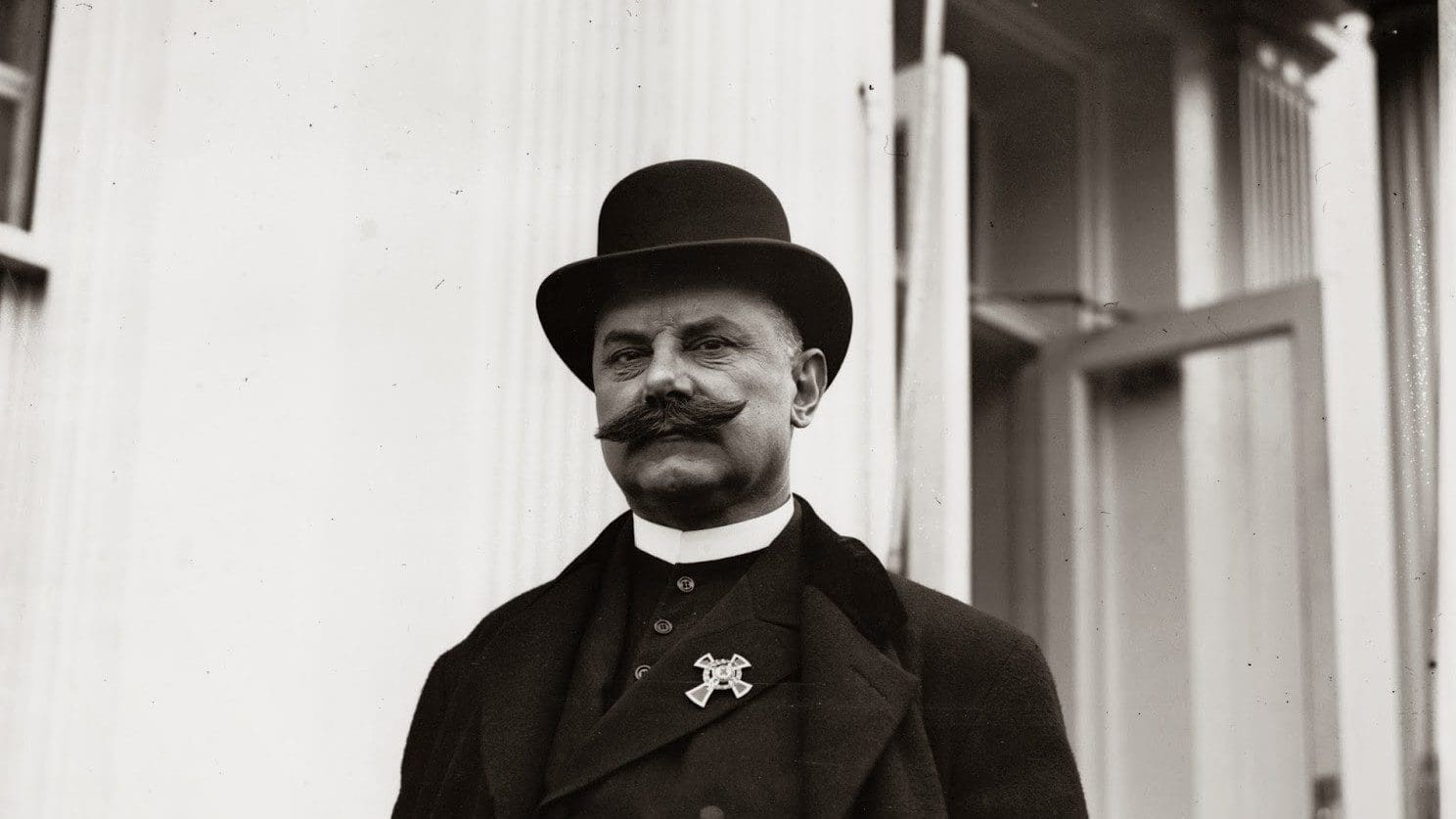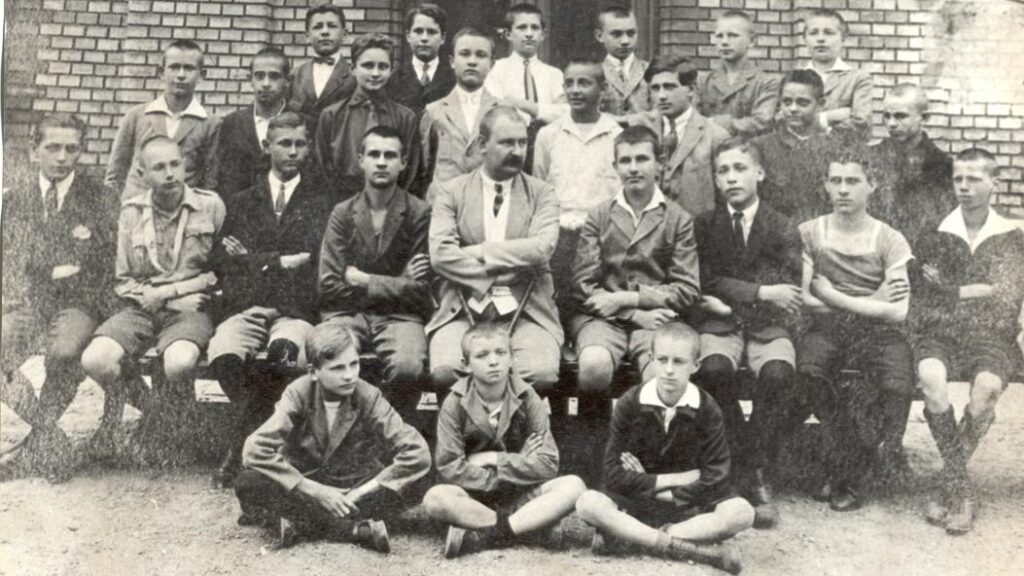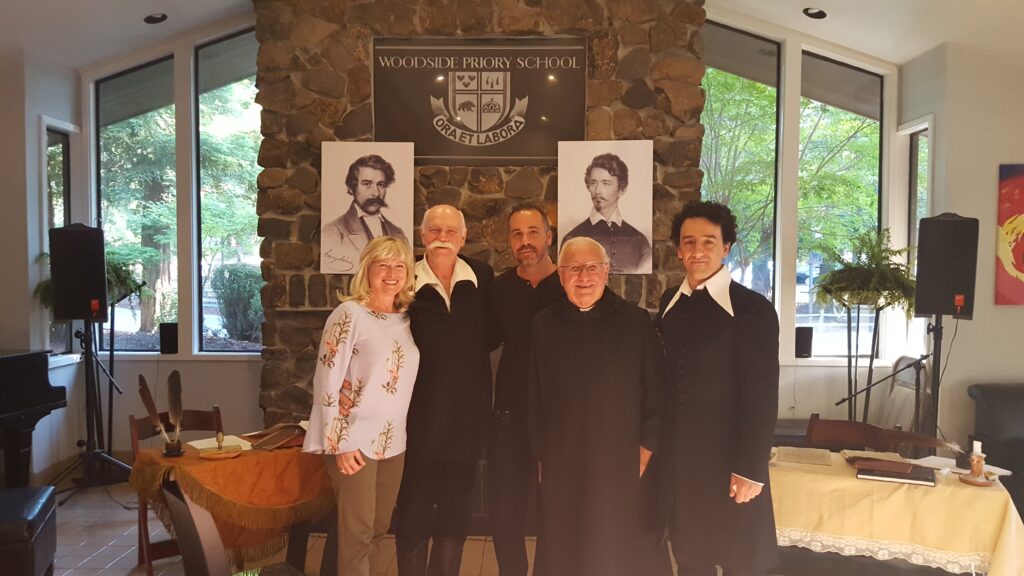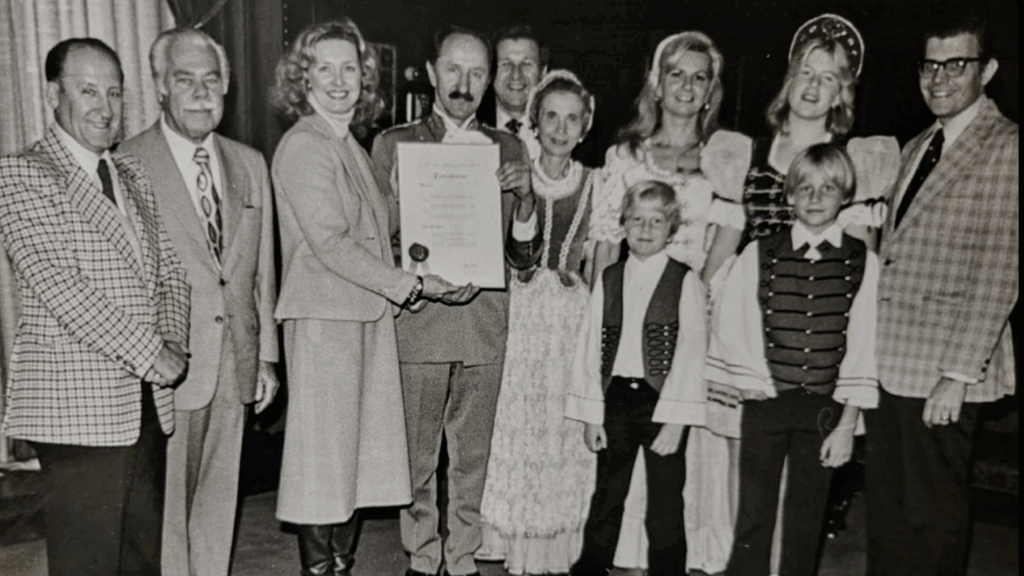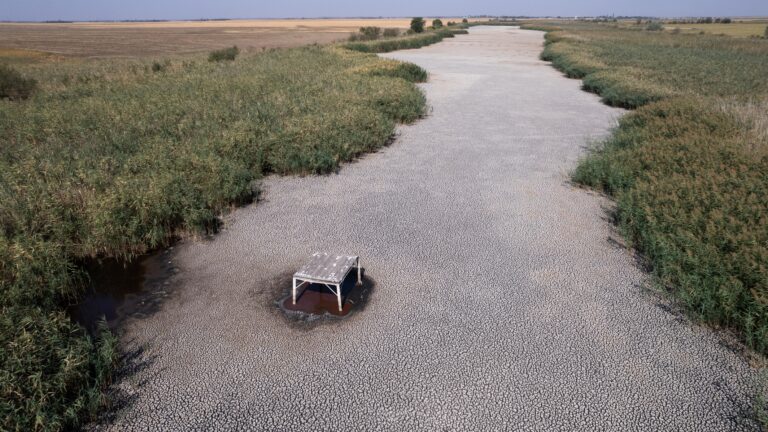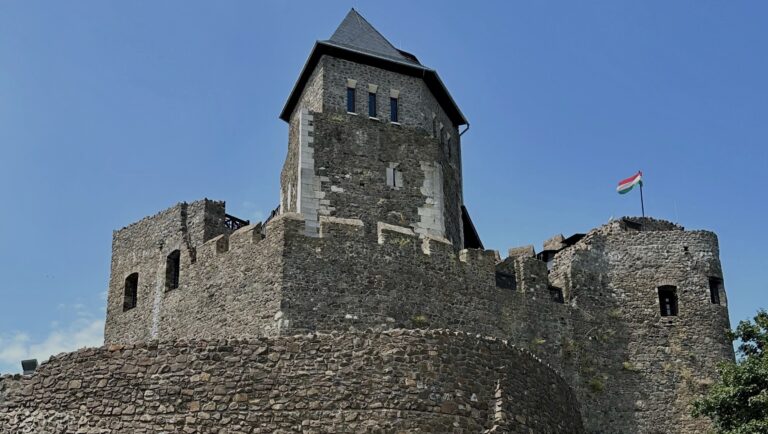In our previous article we introduced readers to the personality of Calvinist bishop Dezső Baltazár of Debrecen, who was one of the chief targets of Catholic-Calvinist animosities in the early twenties in Hungary.
Baltazár’s position was also strengthened by the fact that he was the founding president of the National Association of Reformed Pastors (ORLE), founded in 1907, which provided financial support to Reformed Church clergymen. ORLE became a Protestant bastion of democratic reforms at the beginning of the twenties: at their summer meeting in Kunhegyes in 1921, they demanded a liberal, socially sensitive, and democratic church that kept its distance from the state.
The discussion of their memorandum was postponed by the Reformed Council until 1922, then it was postponed again, and in the end, it was not even put on the agenda. True, the association’s past was marred by an incident. Baltazár’s right-hand man, Gyula Ferenczy, a Calvinist theologian from Debrecen, founding secretary general of ORLE, was forced into retirement in 1921 because he had hailed the 1919 Republic of Councils as ‘the Kingdom of God proclaimed by the Nazarene’.[1] Baltazár, on the other hand, was acquitted of charges of Communist sympathies by the Reformed Church’s vetting committee.
Hungarian Calvinism, they said, ‘is a church suffering under the cross’
ORLE’s newspaper titled Lelkészegyesület, published a tide of complaints[2] from Calvinist publicists and rural pastors about attacks on the Reformed Church. Hungarian Calvinism, they said, ‘is a church suffering under the cross’, accused of being ‘most incompetent and evil’. ‘Manhunts’ and the ‘siege of the Hungarian Zion’ are being carried out against pastors ‘under the slogan of Regnum Marianum [an expression relating to the tradition of King St. Stephen handing over the country to the Virgin Mary – ed.]’, their fate is ‘beatings and spitting in the face, stabbing and a crown of thorns’. The complaints, likening the ordeal of the Calvinist church to Christ’s suffering, were obviously exaggerated: although Protestant pastors were insulted, no Reformed Church pastor was killed during the White Terror, for instance, unlike Catholic priests. But Baltazár, his supporters in Debrecen, and ORLE–that is, Calvinists identified as liberals–were indeed seriously hurt in the first years of the counter-revolution.
One of the main causes of the grievances was Hubert Ottó, a Catholic affiliated with the ruling party, who was appointed főispán of Debrecen in May 1920. The mere fact that a Catholic főispán was appointed to Debrecen, a Calvinist stronghold, would have been enough to cause tensions, since even pro-government Catholic politicians considered Hubert’s appointment to be ‘tactless and tasteless’.[3] But to make matters worse, Hubert was also a notorious performer of counter-revolutionary public purges: as of December 1920, he had removed 94 officials from various positions because of their participation in the 1918 Károlyi Revolution and the 1919 Republic of Councils. (As a matter of fact, on 24 March 1919, he himself had endorsed the Republic in a public statement, along with the entire Debrecen judiciary.)
On his instructions, the local Baross Association reviewed trade licenses in Debrecen, primarily to the detriment of Jews. So the main targets of his zealous purging were Debrecen Calvinists and local Jews. Bishop Baltazár was Hubert’s main opponent, who, as a member of the city council, was not afraid to use his political influence, initiating two votes of no confidence against the főispán during his tenure.
Documents among the Baltazár papers, which can be studied in the Calvinist Church Archives of the Trans-Tisza (Tiszántúl) District,[4] clearly indicate that the bishop was successful in creating coalitions among the Protestant, Jewish and liberal representatives of the local council. In a manuscript titled ‘Truths’, dated 27 December 1920, wrote that ‘the city committee members who joined forces to keep the respect for the ancient character and traditions of Debrecen have already achieved enormous results. In two general assemblies, on 22 and 27 December, the főispán…was voted down by a large majority on four issues…we proved ourselves worthy of our ancestors.’
Apparently, the bishop also tried to win over leading national politicians to his crusade against Hubert. Among the Baltazár papers is a reply from Lóránt Hegedüs, the newly appointed finance minister of the Teleki government, dated 30 December. In the letter, Hegedüs wrote: ‘Thank you very much for the warm felicitations, however, … I will not be involved in the appointment of főispáns, to my greatest regret.’ [5] According to an article dated 1 January 1921, Debrecen mayor Endre Márk, Baltázár’s confidant, was to be appointed as the new főispán, but the realization of this was still pending.
In addition to the above grievances, the bishop publicly called Hubert disinterested in Protestant issues. The list of complaints by the Debrecen Reformed Church was very long. Even during the Romanian occupation, labels were placed on the chairs of the Great Calvinist Church in Debrecen with the text ‘Bash the Jews!’ [6] In the spring of 1920, pictures depicting the Great Church as a synagogue were distributed in the streets, and then insulting messages written in red were once again put on the seats of the Great Church.
On 27 December, an unannounced meeting was held in the church building, for which Baltazár was summoned to the police station. (It is questionable whether a permit was required for meetings of a church organization: according to the police, yes, according to Baltazár, no). On 19 January 1921, a so-called historical remembrance evening would have been held, for which the police did not give permission. Another event on 20 January was also not allowed to be held by the police, and then a musical event two days later was also banned.
However, all these incidents were merely a prelude to the most serious anti-Calvinist atrocity of the early Horthy era. At dawn on 22 January 1921, the words ‘Bash the Calvinists!’ were written in nine places in the Great Church, and human excrement was smeared on the chair of Baltazár and his hymnal lying on it.[7]
The windows were smeared with mud so that they would not make noise when they were broken. Although there was a police officer patrolling the street, he did not notice anything due to the lack of street lighting. In response, a few days later, several skinned foxes were thrown into the garden of the Greek Catholic church in Szent Anna Street in Debrecen. Probably in retaliation, an ORLE meeting on 11 March was broken up by the police.
The identity of the perpetrators of the desecration of the Great Church is still shrouded in mystery. Local historian István Ecsedi, a friend of Baltazár, immediately voiced suspicion in his diary that the “Awakening Hungarians” (a far-right group at the time) were behind the incident, and most historians researching the topic have come to the same conclusion as well. A special Budapest investigative committee was appointed to look into the case, headed by police advisor Sándor Czövek, who in a few days named far-right members of the local university youth as the main suspects in the press, however, historical records differ as to whether the investigation finally came to anything.
After the incident, however, papers immediately started speculating about the identity of the culprits. In the national media, there were references to the fact that since there is ‘no essential differences’ among Christians, the desecration of the church was obviously in the interest ‘of an outside third party’.[9]
The newspaper of the Vas County Lutherans suspected it was Romanians who had infiltrated the border, while others blamed the Jews, including the Debrecen newspaper linked to Hubert which implicitly named the Jews as responsible for the ‘great misdeed’.[10] Not long after the desecration of the church, leaflets apparently written from a Calvinist perspective, but deliberately using terminology and expressions related to Judaism, were distributed in the streets of Debrecen. The pamphlet[11] called on the Calvinists to ‘beat up […] the pseudo-Christian officer bastards’, but noticeably referred to the Reformed Church as a ‘religious community.’ Emotions ran to new heights. The presbytery of the Reformed parish in Mezőladány recorded a little earlier that Calvinists would ‘not allow our Calvinist church to lose another István Tisza’, referring to the great Hungarian conservative politician murdered in 1918.[12]Apparently, they feared for Baltazár’s life.
The report blamed the Calvinists, the Freemasons, and the Jews for the incident
The reports on the events in Debrecen by the Ministry of National Defence provide a very informative reading. Contained in a thick blue folder[13] kept in the Military History Archives, titled ‘Desecration of the Great Reformed Church in Debrecen by unknown perpetrators’, the document indicates that the military detectives had investigated Baltazár, and the city police also suspected him. The report blamed the Calvinists, the Freemasons, and the Jews for the incident, and noted that Baltazár’s private correspondence and pastoral had been confiscated and his followers monitored. The report explicitly referred to Baltazár as an ‘enemy.’ The investigators were quite obviously not interested in identifying the real culprits.
The Entente’s military commission stationed in Debrecen also investigated the case, but the report[14] of British Captain Philip Trotter proved to be just as antisemitic as the conclusions of the Hungarian military investigators. The report claimed that the Debrecen police was led by a converted Jew, and that he was deliberately misleading the investigation in order to help the nascent alliance between Baltazár and the local Jewry. It was perhaps characteristic of the times that while Baltazár had a problem with the police banning his meetings, at the same time the British officer accused the police of being controlled by Baltazár.
It is necessary to note that it was hardly possible to speak of general Calvinist solidarity in the matter. Although many congregations from the eastern region of Tiszántúl, including Hódmezővásárhely, supported the bishop, it is questionable how much they understood the essence of the conflict. The presbytery of the Reformed parish in Berekböszörmény, for example, suspected ‘Rome’ and ‘Jewish world dominance’ behind the discrediting campaign against Baltazár.[15]
Dezső Szücs, a reformed pastor and member of the governing party, stated[18] that the Catholics and Calvinists of Debrecen oppose the liberal Baltazár in unison, and said: ‘I consider it wrong if someone perceives attacks on [Baltazár] as a fight against [the] church.’ A few days after the desecration of the church, the National Association of Protestants, linked to the subsequent Minister of the Interior Gedeon Ráday, issued a statement – but not in support of Baltazár, but against Freemasonry. According to press reports, in April 1921, Reformed Church leaders in Budapest tried to put pressure on Baltazár to end his political activities. Renowned Reformed theologian and newspaper editor Sándor Nagy condemned the ‘devilish’ church desecration in one paragraph, and then criticized Baltazár in four paragraphs, calling the incident a warning sign from God.[19] On the Lutheran side, one pastor came to the conclusion that there was a ‘personal vendetta’ going on against Baltazár, and that the real offense to Protestants was Huberts Catholicism.[20] (It is worth adding that it also took the main Lutheran newspaper a long time even to react to the atrocity). Jenő Sebestyén’s Calvinist paper declared holding a distance from the events, emphasizing that ‘the key to the situation is completely in [Baltazár’s] hands’.[21]
There were harsher reactions as well. Right-wing writer Dezső Szabó, who was a Calvinist, hastily explained the events in an editorial: as he wrote, although the incident was indeed a ‘brutal atrocity’ against his faith, Baltazár represented ‘mortal danger’ to Hungarians. ‘My dear Bishop! The smear on your church is not the work of the stupid assassin who committed this atrocity. That smear is the inevitable, logical consequence of your fatal mistakes. It is you who stained it!’, he wrote in his chaotic article.[22] It is interesting to compare his opinion with that of his brother, Reformed pastor Jenő Szabó, who was opposed to the right-wing regime and who was almost starving at the time and who corresponded with Baltazár after the church desecration. I see you similar to Luther when you say the historical words: “Here I stand”, wrote the other Szabó in his letter.[23]
It is true that Dezső Szabó was also criticized by fellow Calvinists in the Reformed Church publication Kálvinista Szemle: the paper recalled that the writer is a former social democrat, an ex-Catholic (Christian Socialist) and is now an enthusiastic Calvinist, adding sarcastically we look forward to the fourth turnabout as well.[24] Similarly, the presbytery of the Reformed Church parish in Gyula recorded its protest against Szabó. The clearest declaration of solidarity was, perhaps typically, issued by the Szeged Catholics, who assured the Debrecen Calvinist community of their support.
There are conflicting sources regarding Ottó Hubert’s fate following the scandal. After the no confidence vote of the Debrecen general assembly, he was dismissed from his position by the government. Yet there were reports in February that Hubert refused the főispán position of Zala County that had been offered to him, and that the parliamentary delegation visiting the re-opening of the great church in Debrecen was received by Hubert as főispán in March of the same year. A few days later, J. Kováts spoke again in the parliament regarding the removal of the főispán. According to press reports, Hubert was replaced at the end of June of that year by Lajos Miskolczy from Mezőtelegd, who was a Calvinist and a former confidant of Tisza, and thus the upheaval in “Calvinist Rome” could finally subside.
[1] Kovács I. Gábor, ‘A debreceni református hittudományi kari tanárok tudományos pályájának néhány jellemzője’, Egyháztörténeti Szemle, 2015/2 (2015), 89, 92.
[2] Lelkészegyesület, Issues no. 43., 47., 45. and 48. of the year 1920
[3] Nemzetgyűlési napló, VII. köt. (1920), 321, 323.
[4] Tiszántúli Református Egyházkerület Levéltára (Debrecen, hereon cited as TtREL), I.1.e. 25. d. 7/1921.
[5] TtREL, I.1.e. 25. d. 91/1921.
[6] Kerepeszki Róbert, ‘A Turul Szövetség országos és debreceni szervezete (1919-1945)’, Debrecen, Univ. Of Deberecen PhD-thesis, (2009), 218., footnote no. 629.
[7] Egyetértés (Debrecen), 26 Jan. 1921.
[8] Lelkészegyesület, 1921/4. pp. 18–19.; 1921/9. pp. 38–39.; 1921/7. pp. 29–30.
[9] Körösvidék, 30 Jan. 1921.
[10] Debreczeni Újság, 23 Jan. 1921.
[11] TtREL, I.8.d.72. Papers of Imre Révész. I. 18/1921.
[12] TtREL, I.8.d. 25. d. 574/1921.
[13] Hadtörténelmi Levéltár (hereon cited as HL), HM ELN C 1921 50216.
[14] National Archives (Kew), FO 371/6130. Debrecen Military Commission report.
[15] TtREL, I.8.d. 25. d. 575/1921.
[16] TtREL, I.8.d. 25. d. 391/1921.
[17] Nemzetgyűlési napló, VIII. köt. (1920), pp. 456–457.
[18] Pápa és Vidéke, 15 March 1921.
[19] Kálvinista Szemle, 6 Feb. 1921.
[20] Evangélikusok Lapja, 24 Apr. 1921.
[21] Kálvinista Szemle, 20 March 1921.
[22] Szabó Dezső, ‘A debreceni csúfság’, Virradat, 28 Jan. 1921.
[23] HL, HM ELN C 1921 50216.
[24] Kálvinista Szemle, 6 Feb. 1921, pp. 4–5.

